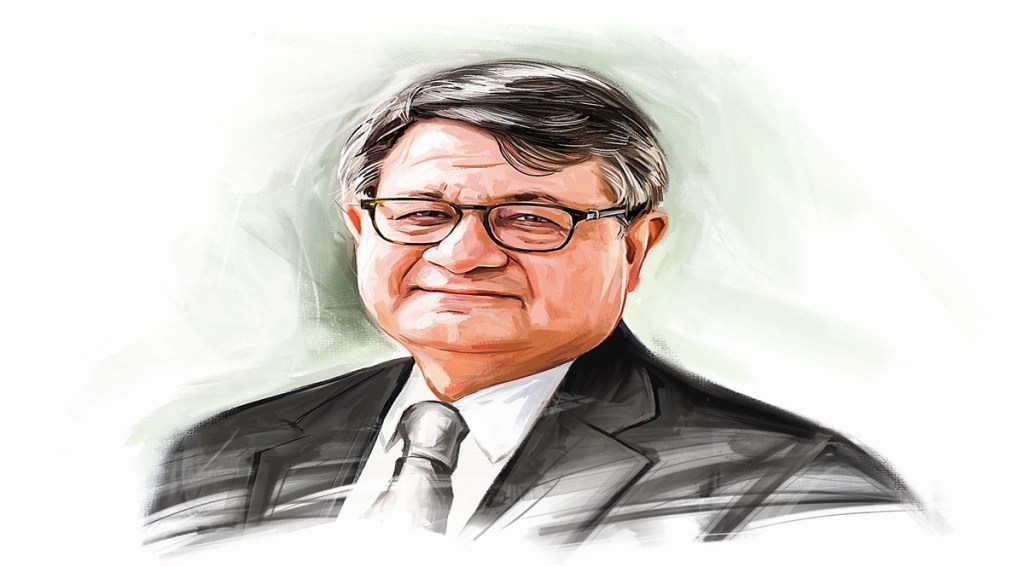By KG Narendranath
Two working papers for the World Bank and the IMF have recently put out divergent estimates of the state of ‘extreme poverty’ in India, on the shared definition of people living on $1.9 or less in purchasing power parity terms. One would have expected the Niti Aayog, the apex public-policy think tank of the government of India, to clear the air, but it has maintained a stoic silence. In fact, India hasn’t had an official poverty estimate for about a decade now, and the government doesn’t seem keen on having an index developed either.
Suman Bery, the newly appointed vice chairman of the Niti Aayog, may have a reason to break the think tank’s silence on the subject. He was a member of the Tendulkar Committee, which brought out a poverty yardstick with painstaking effort a decade ago, only to be drawn into a controversy as many thought its poverty line was very conservative.
Interestingly, the World Bank definition of extreme poverty roughly corresponds to the poverty line computed by Tendulkar committee for 2004-05 (`33 per day), if adjusted for inflation. A credible gauge of poverty for the country is all the more important now, given how the pandemic has caused “unprecedented reversals in poverty reduction.”
Bery is known for his contributions to open-economy macroeconomics. He had a major role as member of the C Rangarajan Committee in the establishment of the Liberalized Exchange Rate Management System (LERMS) in 1993. LERMS heralded the switch to a market-determined exchange rate system in the country and the rupee became fully convertible on the current account.
Bery was also part of the Tarapore Committee -II, which set out the framework for fuller capital account convertibility. Many of the subsequent liberaliations concerning the capital account, including easier external commercial borrowings and the facilitation of short-term capital flows, can be attributed to the recommendations made by that panel. “Manmohan Singh as finance minister relied a lot on soft-spoken Bery for shaping the reforms of the country’s external sector,” says a senior economist.
The RBI-MPC is now walking a thin line of having to provide stimulant to the still-faltering growth while guarding against complacency in controlling inflation. Although coordination between the government and RBI on monetary policy is now much stronger than it was during the tenures of the last two RBI governors, public discussions on monetary policy appear to be less vibrant now.
Bery would be the right fit for the role of an informed, non-bureaucratic government functionary to talk monetary policy with the RBI. He has the benefit of extensive experience in the Technical Advisory Committee, the MPC’s predecessor.
Apart from laying long-term development road maps and writing vision documents, Niti Aayog in recent years has done a creditable job in developing assorted indexes to evaluate India’s development paradigms and outcomes. The education, healthcare, sustainable development and energy-and-climate indexes for assessing Indian states have been noted for their objectivity.
But when it comes to its role in policy-making, the think tank is seen to be much less influential than its predecessor, the erstwhile Planning Commission. Also, it has often got into areas where it perhaps lacked technical expertise – the latest instance is the battery swapping policy for electric vehicles.
With Bery at the helm, Niti Aayog might assume the role of an effective intermediary among the Centre, the states, industry and academia. The think tank would do well to provide a broader, holistic development outlook for the country, rather than take care of the nitty-gritty.
Bery has an excellent track record in running research institutions – he was director general of the National Council of Applied Economic Research for a decade and was country-director of International Growth Centre. He has the “knack of bringing people together,” says a former colleague.
Bery may not have been identified much with the “social-sector issues” – education, healthcare, decentralised planning etc. – which are part of the Niti Aayog’s remit. Neither has he been seen much in the forums where the government and Corporate India converse on policy issues. In the new role, he may, however, have to do all these.
Having worked with state governments as NCAER chief, Bery may require to guard against an alleged erosion of cooperative federalism and win the confidence of states, including the Opposition-ruled ones.

